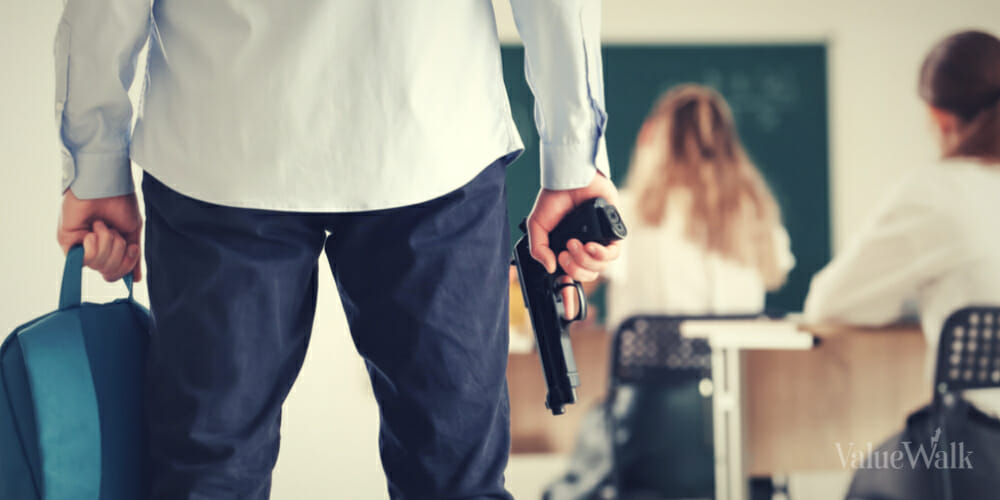MSU Students Demand Change – But From the Wrong People; University Can Do More to Protect Against Campus Shooters Than Legislators
MSU Students Demand Law Makers To Address Gun Violence
WASHINGTON, D.C. (February 16, 2023) – Students at Michigan State University [MSU], reacting to the on-campus mass shooting spree that left 3 dead and 5 in critical condition, are demanding that the State’s legislature pass laws designed to address to gun violence.
But even if such legislation is passed and survives legal attacks based upon the Second Amendment, it may not be very effective, especially since so many people already possess firearms, and guns are easily transported across state lines.
Actually, bureaucrats at universities can do more to reduce the risk of death and injuries from on-campus shooters than state legislators, says Professor John Banzhaf, who recently published a study of school shootings around the world, and simple proven steps students should demand their universities take now without waiting for new and possibly ineffective remedies.
See: How Can Universities Tackle The Threat Of Active Shooters?
For example, MSU students who were in evening classes, the library, and other academic locations when the dreaded active-shooter-on-campus warning was received tried to protect themselves by creating makeshift barricades to block doors.
As one recounted, “they stacked chairs, tables and a shelving unit,” but here, as in many earlier mass school shootings, such hurried barricades aren’t very effective. That’s why so many with expertise have strongly recommended locks on doors – which can be added in 20 minutes and at a cost of less than $20 per door. For example:
The Sandy Hook Advisory Commission recommended that “all classrooms in K-12 schools should be equipped with locked doors that can be locked from the inside.”
The GUARDIAN reported: “in no school shooting incident has a locked classroom door been breached, since the gunman doesn’t want to waste time trying to force it open, and shooting a lock off is easier said than done.”
USA TODAY advised that “security experts say locks go a long way toward keeping out danger. You have to think in terms of we’ve got to have the least amount of tragedy and the most amount of saving, and that may be this key situation, . . Interior locks may have saved lives during a 2005 school shooting on the Red Lake Indian Reservation in Minnesota.”
Inside Higher Ed quoted an expert who noted that while it is impossible to eliminate risk entirely, in his experience “locks absolutely work. People are able to secure themselves in rooms and shooters haven’t been able to get to them.”
ABC NEWS recounted an earlier situation similar to MSU’s. “Some students at UCLA were forced to create makeshift barricades because they were unable to lock classroom doors Wednesday when the school went into lockdown during an active-shooter situation.”
Still another report said: “once an active shooter is in a building, most security experts agree getting into a locked room is one of the most effective deterrents against getting injured or shot. . . . the types of locks found in many hotel rooms are an effective example.”
Another example of life-saving action universities can take now, without waiting for gun-control legislation of questionable utility, is to follow the example of the University of Maryland, which has installed on its walls some 250 inexpensive Stop-the-Bleed kits – usually right below their AED kids for heart attacks.
With them, students can stop arterial bleeding from the life-threatening wounds caused by AR-15s, and similar weapons frequently used in mass shootings, which leave unusually large gaping wounds from which victims frequently bleed to death in minutes before outside help can arrive.
Although one can only speculate whether such kits would have saved any of the three lives lost in MSU’s massacre, or made any of the other victims less critical, many other universities and other institutions have mounted such kits in public places because they can and do save lives in the event of another mass shooter, says Banzhaf.
The mass shooting at Uvalde dramatized the importance of students, hiding or otherwise afraid to be overheard, being able to send silent text messages to school authorities. Yet it appears that MSU had no such arrangement – although it would cost little, and was one of the report’s major recommendations.
The report on mass school shootings in the UNIVERSITY WORLD NEWS strongly recommends more than a dozen similar simple and very inexpensive – yet very effective – steps which MSU and other universities can and should take now, without waiting for the next deranged shooter, or for new legislation, says the law professor, who has also served as a security officer and consultant.












